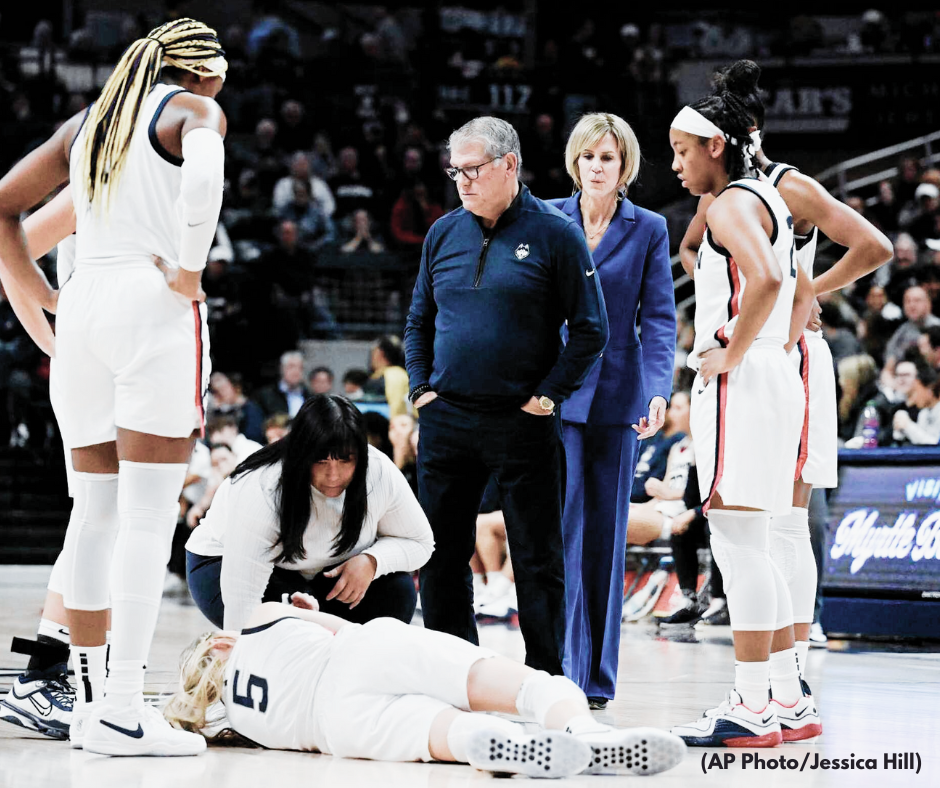The Youth Sports Epidemic: Overuse Injuries in Talented Young Athletes
The Youth Sports Epidemic: Overuse Injuries in Talented Young Athletes
It starts early.
Walk by any park, and you’ll see children as young as three and four being “herded” through cones and ordered about by a coach. By five, many have moved on to a year-round club team, and by 8 or 9, maybe a second club or rec team trying to be a ‘multi-sport’ athlete. By then, most have added private training to their week, and on top of that, there are the middle school and high school teams. By the time these kids reach double digits, they will definitely have gotten their 10,000 hours and some. In this current system, talent is identified early and skill honed by incessantly playing as much as possible, and for what? So that maybe the elusive college scholarship could be within reach.
But there’s a dark side to this overzealous pursuit of success. It’s in the stories of shattered knees, stress fractures, and injuries that derail too many young people’s careers.
“We Are Creating Amazing 15 and 16-year-old athletes, and then their bodies are breaking down.” David Epstein.
It’s a well-documented phenomenon, with studies revealing a rapid increase in a ballooning soft-tissue repair market among children and teenagers. Research from the American Orthopedic Society for Sports Medicine found that 60% of pediatric anterior cruciate ligament (ACL) injuries happen in females between 6 and 18, athletes at an incredibly tender crucial juncture of growth and development. The pressure to excel and the hyperfocus on a singular sport are dangerous precursors to such statistics. A National Athletic Trainers’ Association study reported that overuse injuries (like stress fractures, tendonitis, and growth plate injuries) account for nearly half of all sports injuries to middle and high school students. Johns Hopkins Medicine indicates that yearly, more than 3.5 million children under 14 receive medical treatment for sports injuries and A recent study published by the American Academy of Pediatrics (AAP) sheds light on the prevalence of overuse injuries caused by repetitive stress, revealing that children and adolescents are particularly susceptible due to the intolerance of growing bones to excessive strain. Meanwhile, STOPsportsinjuries.org says that young athletes who specialize in just one sport before age 12 are at a significantly higher risk of severe injuries that may impend their athletic capacity in the long term.
These aren’t freak accidents; they are symbolic of a youth system that pushes young athletes to specialize too early
“When a young person is 16 and says, ‘I’m having knee pain,’ something is wrong.”
Even Uconn Coach Auriemma, who has seen and sculpted the careers of female basketball icons, expressed his concern over the trajectory that leads a once-healthy recruit to miss half of their college career: “When a young person is 16 and says, ‘I’m having knee pain,’ something is wrong. They’re not supposed to have knee pain.” This isn’t a localized anomaly but rather symptomatic of a sports culture that demands more and more, too early and too often. The issue in men’s basketball was well documented in this ESPN article, ‘These kids are ticking time bombs’: The threat of youth basketball. But It isn’t merely a basketball problem; it’s a crisis that spans all youth sports. Orthopedic surgeons outline the damage as “a train heading down the wrong track,” manifesting in ill-equipped bodies not able to handle the stress applied to them by constant and repetitive play. And it’s not just physical, it’s also mental. The Advisory and Oversight Committee (AOC) of the NCAA research suggests that overuse and early specialization heightens injury risk, fatigue, and psychological burnout.
What Is The Solution?
Delay year-round single sports participation. Incorporate more free, unstructured play and early diversification, playing multiple sports, and sampling different activities – hiking, biking, skateboarding, surfing, or just playing at the playground, can all help fortify a budding athlete by cultivating a range of movements and skills to counteract a singular sport and repetitive movements. Engaging in activities involving varying planes of movement and surfaces reduces the risk of injury and creates a more well-rounded and adaptable athlete.
Quantifying Rest as Training
The adage that champions aren’t made during games but in the hours of practice that precede them stands true, but one factor often overlooked is rest. Athletes at the highest levels prioritize rest as much as they do training, recognizing it as an essential cog in the wheel of peak performance. Young athletes need to allocate time for their bodies to recover and recuperate, to counteract the stress they are putting on their bodies and to revitalize themselves mentally and physically.
Shifting Paradigms of Success
Possibly, the most important change that needs to occur is that we need to redefine success. When winning or a college scholarship is the sole yardstick, we miss the subtler and more important victories from nurturing an inclusive, enjoyable, and lifelong relationship with sports. We’re at an inflection point, we need to change our approach to youth sports. A system fixated on single-sport specialization and competitive edge without care for holistic athlete welfare is destroying our kids. Take agency parents, our kids deserve it.
